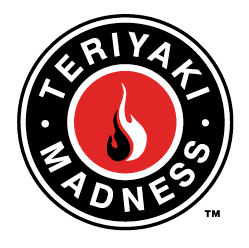RESTAURANT INDUSTRY STATISTICS FOR RESTAURANTEURS
What’s happening in the restaurant industry? Here are the restaurant industry statistics every restauranteur should know about and where the industry is headed.
THE TENACITY OF AN ESSENTIAL INDUSTRY
The restaurant industry contributes significantly to the global economy, so it’s difficult to ignore the permeating and lasting impacts that COVID-19 has had. The U.S. Census report found that the ongoing pandemic had negatively impacted the sales for bars and restaurants up to $280 billion, even as the majority of purveyors did their best to follow all protocols and various mandates as they developed.
According to the National Restaurant Association, the pandemic and subsequent suspension of dine-in services cost the restaurant industry around 5.9 million jobs at the outset of the pandemic, a devastating blow to a business model so centered around customer service.
Fortunately, the food service business is resilient. After weathering the challenges of a years-long pandemic, the restaurant industry is on the mend, bringing back workers and incorporating new tools and lessons learned. While the restaurant world may not have returned to “normal” as we once knew it, restaurant industry statistics show that the foodservice sector is expected to reach $898 billion in sales and grow its workforce by 400,000 jobs (with total industry employment at 14.9 million) by the end of 2022.
As the restaurant world is reopening after quarantines and stay-at-home orders, restaurateurs face a new set of challenges, responsibilities, and opportunities for growth.
SUPPLY CHAIN & LABOR FORCE
The ongoing pandemic, supply chain issues, and recession fears raise multiple challenges for the restaurant industry. As a result, restaurant owners face often unpredictable product shortages and increasing prices to fulfill their inventory needs. While labor shortages continue to improve, the increase in food cost affects everything. The cost of some products has inflated in price and owners must navigate how and where to spend their money. According to the National Restaurant Association, wholesale food costs increased by 13.4% in 2021, and hourly labor costs went up by 8.6% for the year.
While supply chain issues are largely beyond your control, you can implement some practices to retain the restaurant workers you have and even attract new ones. Addressing wages and benefit requests, flexible pay schedules, a safe and supportive workspace, and bolstering the overall company culture are just some ways you can show appreciation for the workers who keep your business running.
FOOD AT YOUR FINGERTIPS
People always need to eat, so the restaurant industry forecast is promising, but the process through which we access our food is changing. In recent years, online food ordering has become broadly popular, with digital ordering and delivery growing 300% faster than dine-in traffic since 2014. Other technologies have also come into play, as well as guests becoming more concerned with reducing food waste, and restaurant workers asking for more equitable pay.
Revenue for online food delivery continues to climb, with nearly 60% of diners expecting to order more of their food digitally in 2022. As a result, restaurants that are able to adapt to this growing trend by offering access to an online ordering system have been able to increase their takeout profits 30% more than those who do not.
FAST & FUN FOR THE WIN
While there are endless restaurant ownership opportunities to explore, restaurant industry statistics suggest that fast casual is an ideal sector to consider. While the COVID-19 pandemic presented exceptional challenges for the restaurant industry, fast casual concepts fared slightly better than full-service or fine dining establishments. Compound Annual Growth Rate (CAGR) is the touchstone for franchises to understand how their investments are growing. Despite adversity, the fast casual restaurant industry is on track to grow by more than 10% CAGR over the next five years.
Bridging the gap between full service and fast food, the fast casual restaurant industry is filled with an endless amount of potential for both guests and restauranteurs, combining convenience, affordability, and flavorful possibilities. The fast casual market was valued at $125.6 billion in 2019 and is expected to grow to $209.1 billion by 2026, making it a winning business opportunity for savvy investors.
Fast casual restaurants are positioned to be more pandemic and recession-resistant, able to adapt and refocus their services during difficult times. Limited in-person dining capabilities have been devastating for many restaurants during COVID-19, but fast casual establishments have pivoted to embrace delivery and takeaway options to control costs and sustain income while keeping mindful of guests’ and employees’ safety.
CLAIM YOUR SEAT AT THE TABLE
Owning a restaurant is complicated by the realities and demands of a multi-faceted industry, but it can also be deeply rewarding if you play it smart. Luckily, the outlook with restaurant franchise statistics is exceedingly bright, as the overall industry is expected to improve by 4.9% to exceed $826.6 billion in 2022.
In order to make your mark, it’s vital to embrace change and innovation as a business owner. In the world of restaurants, customers will always crave new flavors, specialty items, and limited-time deals, in addition to convenience and affordability. Changing lifestyles and rising demands for on-the-go food ensure that restaurants will always have opportunities to grow and meet new trends and changing preferences, as long as you, as a business owner, are ready and able to meet the task.
BOWL ‘EM OVER WITH TMAD
If you’ve been studying food and restaurant trends, you’d be right to be curious about how to open an Asian cuisine restaurant and capitalize on the opportunity to make an impact with a trendsetting and recession and pandemic-resistant business model. Luckily, Teriyaki Madness (TMAD for short) is dishing out fresh opportunities for prospective franchise owners interested in a brand that has cornered three of the hottest restaurant markets: Asian, Chicken, and Fast Casual. Even better? Nearly 80% of TMAD’s business is done outside the four walls through catering, takeout, online ordering and integrated third party delivery.
For over 20 years, TMAD has been spreading the Madness across the country with our unique Seattle-style teriyaki bowls and fun, no-hassle approach to dining. Whether you’re new to the world of restaurants or simply want to expand your portfolio with a brand that appeals to a broad range of hungry diners and offers you endless growth potential, TMAD is where it’s at.
To learn more about franchising opportunities with the country’s fastest growing big restaurant chain, download our franchise report.


